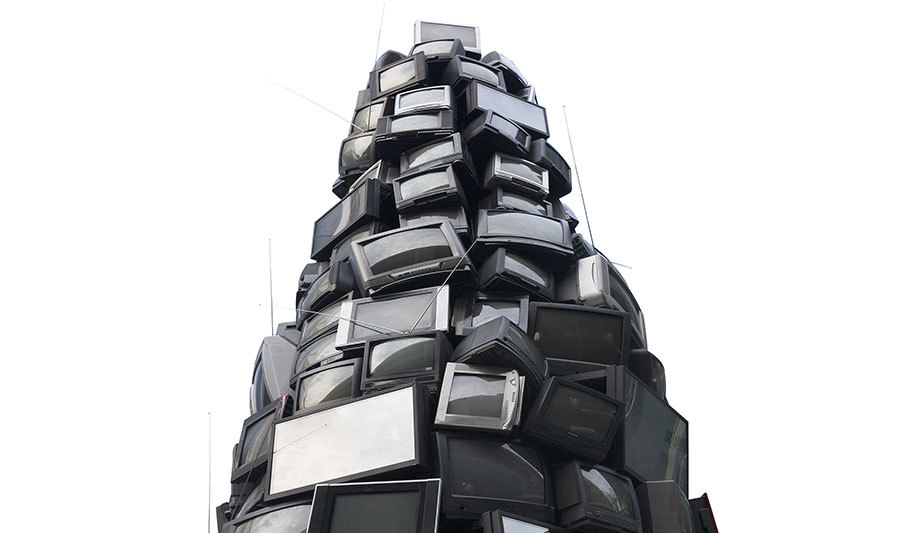Check out our special report on casino security
How should integrators manage disposal of systems at end-of-life?
Editor Introduction
Rapid technology innovation in the physical security market comes with it a commensurate need to dispose of older systems as they are replaced. Some technologies can help minimise the waste, providing, for example, the ability to use existing coaxial cable with newer IP video systems. However, absent the ability to reuse equipment, how should integrators manage disposal of systems at end-of-life? Here are some responses from our Expert Panel.
Years ago, gear simply ended up in a dumpster then a landfill, of course, but the “uninstalling” technicians are often hoarders of old stuff, so interesting or re-usable things disappear into their garages until their partner makes them throw it all out. Seriously though, these are the equipment owner’s assets so they should formally get first refusal. When spares become difficult to find, and budgets are tight, having replacements stashed away can be wise. The rapid obsolescence of modern products makes this all the more so when systems have to last five or ten years. In an attempt to prevent poisoning people by burning electronics on West African dumps extracting valuable metals to eke out a living, Europe has had WEEE regulations since 2006, applying to Waste Electrical and Electronic Equipment recycling. I hope the rest of the world does the same or better.
There are obvious environmental and corporate social responsibly issues in dealing with end-of-life security systems, just as with the disposal of any other technology. As technology providers (and indeed as residents of the planet) we have a vested interest and responsibility to ensure waste is dealt with correctly and safely. In the United Kingdom, TDSi takes part in a scheme run by the BSIA (British Security Industry Association) that strictly adheres to waste disposal legislation, including the UK WEEE (Waste Electrical and Electronic Equipment recycling) Directive. This gives us peace of mind that these waste items are properly disposed of and recycled whenever possible. Our advice to other security technology providers and integrators looking for advice or assistance with disposing of end-of-life systems would be to contact either the BSIA, NSI (National Security Inspectorate) or similar professional associations applicable to your geographical location.
Planning for proper disposal of used equipment is now part of any installation plan, or it certainly should be. Equipment removed contains hazardous waste, precious metals, and more importantly confidential end user data. One of our integrator partners, CBE, is very green and proactive in how they manage this process. With more than 100 technicians working across the country, they coordinate the return of all used equipment to their main warehouse. Upon arrival, first all data is securely erased from hard drives, then the equipment is broken down into components and recycled or disposed of properly. This is one of the better examples of system end-of-life disposal I’ve seen.
When managing the disposal of end-of-life hardware, it’s important for integrators to have access to information about the materials used in the development of the components they are removing. This is especially true for older products that may contain potentially hazardous materials like mercury, lead, or other contaminants. As initiatives like Leadership in Energy and Environmental Design (LEED) green building certification programs become more prevalent, the awareness of what is being thrown away is just as important as what is being introduced during upgrades and renovations or in new building designs. That’s why it’s important for integrators to partner with manufacturers that are committed to keeping electronics out of landfills and supporting environmentally responsible recycling programs.
According to the U.S. Environmental Protection Agency (EPA), donating or recycling electronic products conserves natural resources and avoids air and water pollution, as well as greenhouse gas emissions that are caused by manufacturing virgin materials. I have heard of one integrator that keeps bins ready to encourage recycling habits. Old batteries, monitors, cameras and other equipment should be stored in designated recycling areas to avoid workplace hazards. Components that can be recycled include desktop computers, servers, hard drives, keyboards, routers, monitors, wires, etc. Disposal of e-wastes is a significant environmental concern, and one that our industry as a whole should be addressing.
Smart integrators do not have to deal with this issue as they have been upgrading the system as a service to the customer over the life of the contract. For those who do not provide this service, throw the old equipment away or let the integrator who takes the job away from you provide this service.
Editor Summary
As technology innovation accelerates, we all face questions about disposal of electronics in our personal lives. Just imagine the broader scope of the problem related to large physical security systems! Integrators that adopt a “reduce, reuse and recycle” concept can play a central role in managing disposal of the security market’s electronic waste stream. The problem is not going away (and neither might the industries refuse if it is merely transported to a landfill!)
Expert commentary
Security beat
One system, one card
DownloadEnhancing physical access control using a self-service model
DownloadAligning physical and cyber defence for total protection
DownloadUnderstanding AI-powered video analytics
DownloadHow to implement a physical security strategy with privacy in mind
DownloadHikvision AOV 4G Solar Camera Series for Off-Grid Video Security
KentixONE – IoT Access and Monitoring For Data Centres
Climax Technology HSGW-Gen3 Modular Smart Security Gateway























